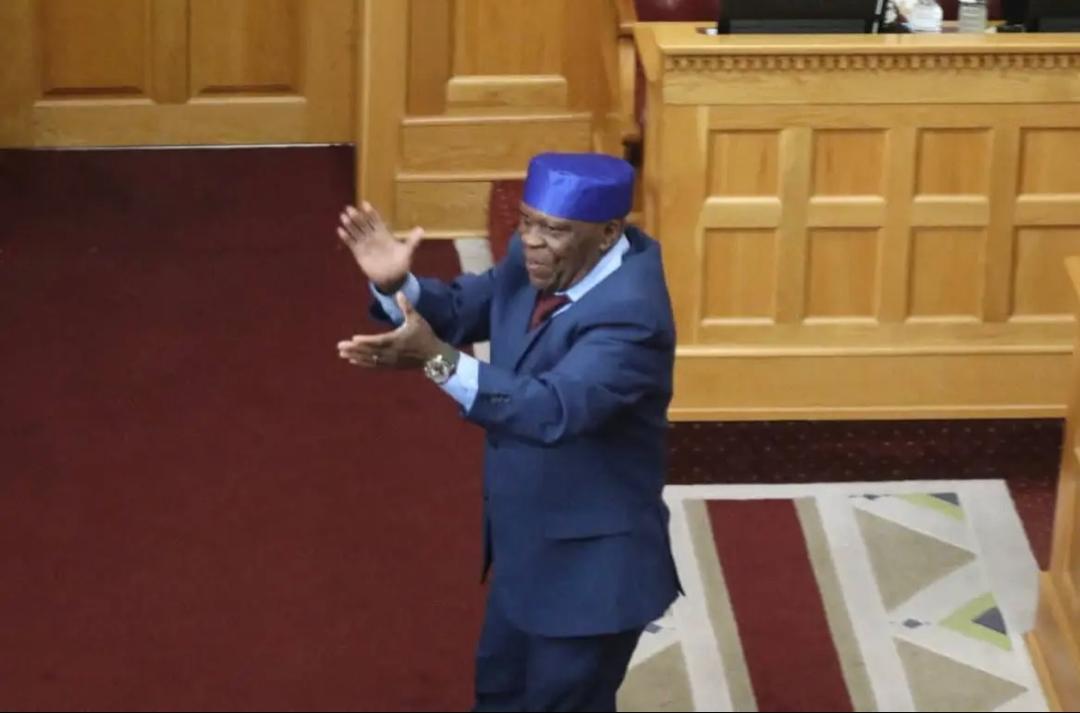• LUISE HOFFMANN THIS high, single-stemmed tree is easy to identify by its large, very symmetric well-rounded crown, particularly visible when bare during the dry season, when it somewhat resembles a slender baobab (Adansonia digitata).
The manketti tree occurs only on deep Kalahari sand from Mahenene eastwards into the Kavango and the Zambezi regions and occasionally as far south as the vicinity of Tsumkwe, as well as Tsumeb, Grootfontein and Otavi where it is found on islands of wind-blown sand. Dense groves of Manketti trees grow in the Pété Forest on the long, 10 to 20 m high dunes extending from east to west around Mpungu in Western Kavango and in the adjacent „Manketti-Block, where it may be the only tree species or intermingled with other trees such as the kiaat (Pterocarpus angolensis).
Names: A. mankettiboom; G. Mankettibaum, H. omungete; Hi. omungetti Ky. omunghete; Nd. omunkete; D/N. /ghomhais; Gc. Kg. ugongo; Mb. mughongo.
The genus name Schinziophyton refers to the Swiss botanist Hans Schinz who collected plants in South West Africa [as Namibia was then known] toward the end of the 19th century and whose name occurs in the botanical name of many Namibian plants.
The species name rautanenii honours the Finnish missionary Martti Rautanen (1845 – 1926) who founded the missionary station Olukonda close to Ondangwa.
The manketti tree generally reaches a height of 10 – 15 m, but trees as high as 24m with a trunk diameter of 1m have been reported.
The smooth trunk is grey-green to pale golden yellow with round, flat pieces of bark peeling off. Hollows often occur in the trunks in which rain water may collect.
The bark on young branches is smooth and yellow-brown to grey covered in dense rust-brown hairs.
Five to seven leaflets form a compound leaf on a long, hairy leaf stalk.
They are dark green with rust-brown hairs above, pale yellow-green with a whitish woolly covering below and very distinct leaf veins.
Yellowish white flowers, about 10 mm in diameter, with golden to reddish brown hairy sepals appear from September – October.
They measure about 10 mm across. Male trees bear numerous flowers in dense sprays of about 12 cm; female sprays are shorter and the flowers spaced further apart.
Egg shaped fruit, covered in grey green hairs and measuring about 3,5 x 2,5 cm develop on the female trees, the skin turning hard, tough and brown when mature.
The very hard, almond shaped seeds are surrounded by a thin layer of mealy pulp. Manketti trees only begin bearing fruit at the age of 25 years but can then produce up to 950 kg nuts per tree.
The tree is very well adapted to its semi-arid environment. A long taproot reaches ground water, the thick trunk stores moisture and the thick bark protects the tree from evaporation and from damage by veld fires.
The manketti tree is a particularly valuable resource for the people of the Kung tribe – read more about this aspect in Part 2 next week.
Stay informed with The Namibian – your source for credible journalism. Get in-depth reporting and opinions for
only N$85 a month. Invest in journalism, invest in democracy –
Subscribe Now!










